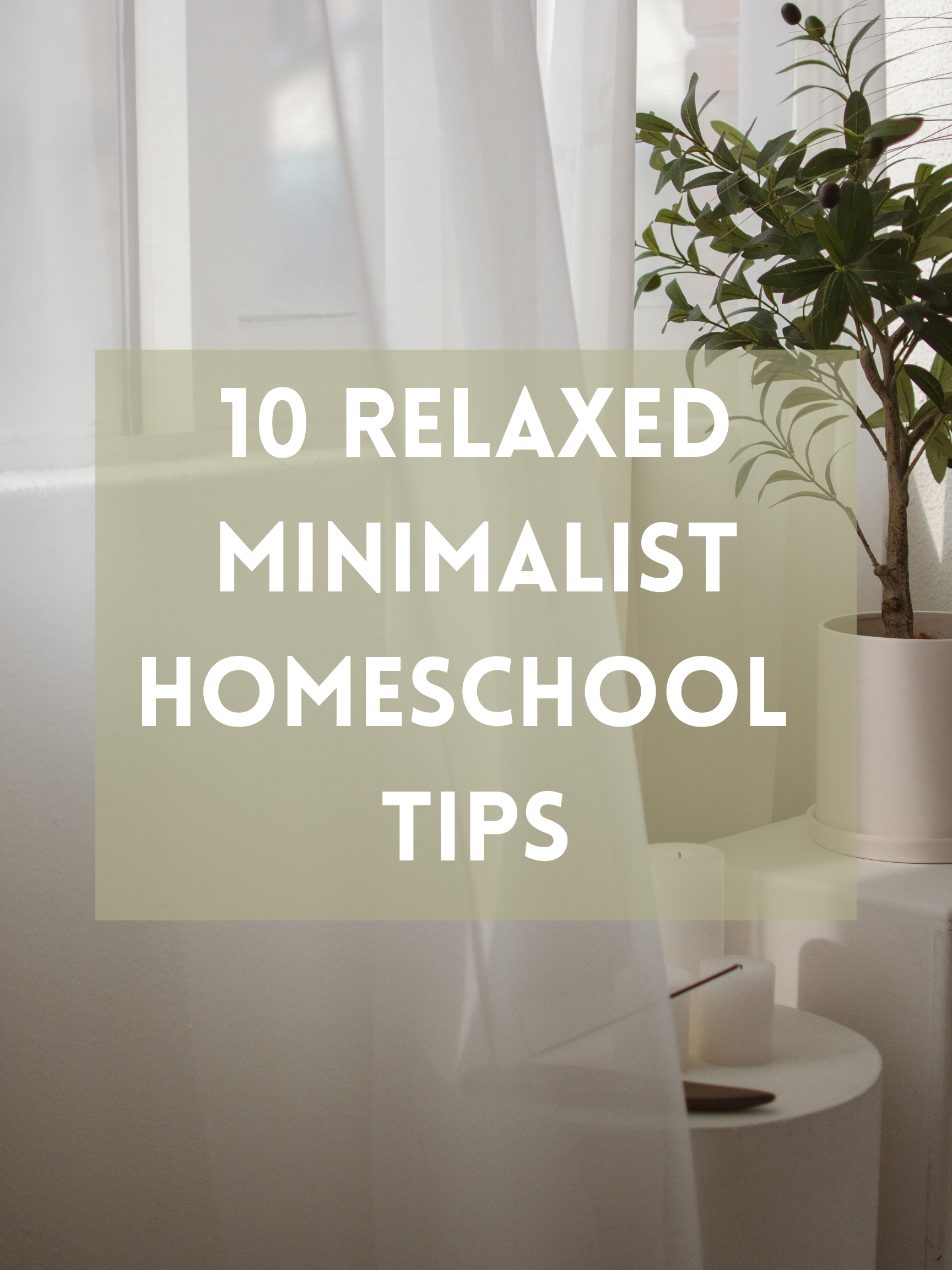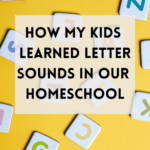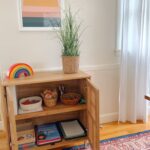Hello friends :)
I wanted to chat about two of my favorite topics today: homeschool and minimalism. After reading Minimalist Homeschool by Zara Fagen, The Unhurried Homeschooler by Durenda Wilson, and Teaching from Rest by Sarah MacKenzie, I was sold on the idea of relaxed homeschooling. Do not mistake relaxed for laziness. Instead, you are honing in on what is the most important to you as a homeschooling family and making sure you have time and space to prioritize it. Adding too much will not only muddle what is important, but may lead to burnout. Less is more when it comes to a lot of things in life, and homeschooling is no exception. I highly recommend reading the books I mentioned above to get a better idea and understanding of minimalist homeschooling and teaching from a place of rest.
But for today, I wanted to share some tips that have helped me to sink into this relaxed and minimal mindset. Each and every homeschool family is different, so what works for us may not work for you, but I hope something resonates with you.
#1. Identify 3-4 things that are the most important to you. This will look different for everyone, but I found it very helpful to write down the top things I believe are the most important to our family so I do not lose sight of them in our daily grind. So for example, for my young children, we focus on reading aloud, getting outside, and having white space in our day for play. These may change as they get older, but for now, these are the most important things that I will not sacrifice for academics. We fit learning and lessons around our life… not life around lessons and learning. Knowing this deep in my heart helps me to stay grounded when I start to see a lot of shiny new curriculum and suddenly want to add on *all the things*. There are only so many hours in the day. With that being said…
#2: Focus on the 3 Rs. At these young ages, the most important things for my children to learn are reading, writing, and arithmetic (also known as the 3 Rs). We call these our core subjects and everything else is exposure at this point. We aren’t spending hours sitting down with 5-7 subjects a day. We do a little bit of reading, math, and writing, and then we are free to explore interests and other topics naturally (and lots through books, but I’ll get to that).
#3: Consider a four-day homeschool week. We school year-round which gives us a lot of flexibility because we don’t have to crunch everything within 9 months. Instead, we go at our own pace and are able to take off time when needed. One of the things I like most is only focusing on school Monday-Thursday and having Fridays for errands like grocery shopping, cleaning, catch-up, or fun with friends.
#4: Utilize your library. It is free. FREE! We visit our library 1-2 times a week and can be seen taking out at least 40 books a week because we can. We take out picture books, early readers, chapter books, learning tools and kits (everything from microscopes to board games), and more. And aside from that, the very best part is that it ALL goes back. We do not have to store any of it long-term. This helps keep shelves from overflowing and money leaving the bank. The library is a minimalist mom’s dream.
#5: Rotate secondary subjects. You don’t have to do all the subjects all the time. Even if your state requirements A, B, and C… you can pick and choose to focus on one at a time at different times of year. For example, you could focus on history the first half of your year and then switch over the science for the second half. I like to break up subjects by season (social studies/history in the winter while we are indoors watching documentaries and reading books and science/nature study in the spring/summer when it is beautiful out seems to work best for us so far!) Breaking things up this way helps to keep our focus on the 3 Rs without feeling the stress of too many other subjects.
#6: Shop your own home and use what you have. Sometimes we forget what we have lying around, so it helps to keep things tidy/organized. If it isn’t, take a day to sort through and see exactly what you have. Not everything has to be brand new and shiny… an old plastic bin to store math manipulatives works just as fine as seagrass basket. Promise.
#7: Use a spiral notebook as a planner. I just started doing this recently but instead of buying a planner, I grabbed a cheap $1 notebook and took an hour to make headings and organize it exactly how I want it. It is simple and gets the job done.
#8: Plan from behind. The only thing I plan ahead of time is which open-and-go curriculum we will use for the core subjects, seasonal topics for unit studies, and monthly booklists. Once I have those done, my planner is ready to roll. We just work our way through lessons at our own pace and I will “plan from behind” which simply means I write down what we do AFTER the fact. It helps to avoid overwhelm if we do not get to something! Writing down the things we do afterwards also helps me to see all the natural learning that goes on daily.
#9. Keep afternoons free for interest-led learning and activities. A big part of having a relaxed day is to keep a lot of white space in our day for boredom, creativity, and interest-led activities. When you let your kids have the time to pursue what they enjoy, some of the very best learning happens. The deep learning.
#10. Prioritize reading aloud. So many subjects can be covered simply by sitting together and reading. We read aloud a wide variety of books that cover history, geography, science, nature, social studies, mental health, nutrition, faith, even math! Not only are they learning by subject matter, but also learning patience and building their vocabulary. If you haven’t read The Read-Aloud by Sarah Mackenzie, add to your list because it will encourage you to always be reading to your children, no matter their age!
Interested in seeing a list of all our favorite homeschool resources? You can find it HERE.



